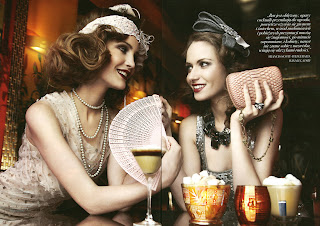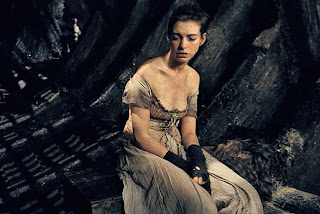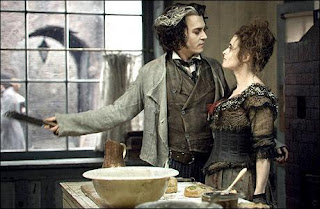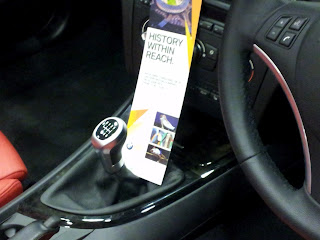There is something odd about going to see a film in the
cinema and walking out at the end feeling, well, odd. I have only ever experienced it three times in my cinema-going
life – after watching Atonement, following 12 Years a Slave, and now after
viewing Martin Scorcesse's The Wolf of Wall Street. Perhaps it just depends on the type of film
you choose to see, but I always tend to decide whether a film has been good or
not depending on the way it makes me feel after the credits roll. After swashbuckling
adventures like Pirates of the Caribbean, X-Men and Avengers Assemble I felt
powerful, invincible, walking out of the cinema complex with an extra weight in
my step and the wind in my hair (totally imaginary) thinking that I was a
superhero or a secret agent or somebody the masses looked upon to save the
world. This is ridiculous, of course, but nevertheless if a movie makes me feel
like I want to climb trees and fly across the sky then it’s at least had
something of an impact on me.
My reaction
following The Wolf of Wall Street was a not unwelcome desire to go out and do
something crazy and not be defined by the laws of morality or by what I tell myself
I should do. So I gorged myself on a McDonald’s and I didn’t feel bad about it
because I enjoyed it and why should you stop enjoying things in life? But the
difference between me and the film is that my conscience came back to me before
I’d even finished my last bite and felt I should probably exercise in the
morning to make myself feel better about my greediness. I’m no Wolf of Wimpy or
Mountain Lion of McDonald’s, clearly, because I sought redemption for what I
had done. But this is a sentiment that the film doesn’t share, and could easily
lead people with a weaker moral conscience than I to believe that living crazy
in fast cars is a damn site better than riding the subway home every day.
The trouble with
the film is this message that you can play hard and party harder, with the only
repercussion that when you get caught all you have to do is sell your friends
up the river to the FBI. When you have lived a life of debauchery as the wolf
of Wall Street this doesn’t seem like such a high price to pay when the
definition of a friend has always been a little shaky anyway. That is not to
say that Leonardo DiCaprio doesn’t do a phenomenal job in his portrayal of the
slimy, smooth-taking Jordan Belfort, the “wolf” of Wall Street, and his rags to
riches story. We are introduced to Belfort when he is living at the peak of his
luxurious life, advertised like in infomercial. We see images of his beautiful
wife, played by the lovely (and with cheekbones to die for) Margot Robbie, view
his huge house, fast cars and expensive watches in cut-scenes that act like
picture postcards of what success can buy you.
The whole film, in fact, is shot like an infomercial for Belfort’s way of life, and the opening of the film is even an advertisement for his stocks company Stratton Oakmont, and DiCaprio later narrates the story to us looking straight down the lens of the camera. However all of this beauty is juxtaposed instantly by one of the first images of Belfort himself caught in a lurid sex act with a random woman, snorting crack cocaine. The 22 year old Belfort whom we meet following this introduction is rendered naïve by our knowledge that the young man who sipped water and politely refused Martini’s on his lunch break would soon become a multi-millionaire drug and sex addict.
The whole film, in fact, is shot like an infomercial for Belfort’s way of life, and the opening of the film is even an advertisement for his stocks company Stratton Oakmont, and DiCaprio later narrates the story to us looking straight down the lens of the camera. However all of this beauty is juxtaposed instantly by one of the first images of Belfort himself caught in a lurid sex act with a random woman, snorting crack cocaine. The 22 year old Belfort whom we meet following this introduction is rendered naïve by our knowledge that the young man who sipped water and politely refused Martini’s on his lunch break would soon become a multi-millionaire drug and sex addict.
The film then
unfolds in chronological order and the audience get to watch the encounters and
circumstances that shaped Belfort’s life and brought him to the point of
snorting coke on the backs of naked women. We learn that Belfort had married
his first wife at 22, a beautiful but plain-clothed girl who grows increasingly
concerned about the moral choices he is making. However it is in one of her
appeals to him to stop cheating poor people out of money that he develops the
cunning plan to cheat the rich instead. And when the papers print a negative
article about him as the Wolf of Wall Street, likening him to some kind of
corporate Robin Hood who steals from the rich and gives to himself, it is his
wife who assures him that all publicity is good publicity, and he looks good in
the picture so why should he care. One
of the best scenes in the film is after Belfort’s wife points him to a job
advertisement by a small business looking to hire a stock-broker. When he
attends the interview, he opens the door to find a small office with a bunch of
middle-aged, dowdy men working on the “pink paper” companies whose shares sell
for only $0.99. The office is shabby and stuffy and down and out, but Belfort
comes in and sweeps them all off their feet with his frightening talent as a
salesman. He manages to convince people to buy things they don’t even need or
want, making them believe they will be missing out big time if they let the
opportunity slip by. The rest of the office stand aghast as he makes a sale
worth more than any of them could dream of in his first ever sales call. In
this scene, although Belfort is undeniably ruthless and cheating people into
buying stocks and shares in companies that are utterly worthless, he is at his
most majestic.
Owing to his natural
talents and business prowess, Belfort slowly works his way to the top and
becomes the owner of his own stock firm with the help of a bunch of misfits
whom he has moulded and guided into becoming almost as frightening at selling
snow to the Eskimos as himself. There is nothing particularly endearing about
Belfort’s group of merry men, they are all overweight, slimy and oily and as
money-obsessed as he is. One of the best relationships, however, is between
Belfort and Donnie Azoff, played by Jonah Hill, and it is clear that an
off-screen friendship has lent itself well to what appears to be an often
ad-libbed and spontaneous onscreen relationship. Although Belfort has already
been dabbling in drugs and hookers, it is Donnie who really introduces him to
the pleasures of getting high as they smoke pot in a diner and cement the
future antics of their relationship.
Donnie introduces Belfort to Ludes, a drug that was originally prescribed to housewives and those suffering from anxiety and lack of sleep, which if you can stop yourself from sleeping after 20 minutes gives you the most delirious and unbelievable high. So needless to say Belfort spends much of the rest of the movie high as a kite on ludes, lending itself to one of the funniest sequences in the film. Belfort and Donnie take a dose of special ludes that have been maturing since they were declared illegal and stripped from pharmacy shelves. After ignoring advice to only take one of these pills, they end up polishing the lot and both lose their ability to speak and function. DiCaprio gives a hilarious turn in this sequence, slurring his speech and crawling on the floor, opening his car door with his foot and driving recklessly. However even though this scene is extremely funny, it is simply too long and the laughs wear off along with the effects of the drugs. It embodies my other niggling concern with the film that everything is all just a bit too much. The film is too long, there is too much dialogue, too much nudity, too much swearing, too many drugs, even a little too much screaming from DiCaprio in his motivational speeches.
Donnie introduces Belfort to Ludes, a drug that was originally prescribed to housewives and those suffering from anxiety and lack of sleep, which if you can stop yourself from sleeping after 20 minutes gives you the most delirious and unbelievable high. So needless to say Belfort spends much of the rest of the movie high as a kite on ludes, lending itself to one of the funniest sequences in the film. Belfort and Donnie take a dose of special ludes that have been maturing since they were declared illegal and stripped from pharmacy shelves. After ignoring advice to only take one of these pills, they end up polishing the lot and both lose their ability to speak and function. DiCaprio gives a hilarious turn in this sequence, slurring his speech and crawling on the floor, opening his car door with his foot and driving recklessly. However even though this scene is extremely funny, it is simply too long and the laughs wear off along with the effects of the drugs. It embodies my other niggling concern with the film that everything is all just a bit too much. The film is too long, there is too much dialogue, too much nudity, too much swearing, too many drugs, even a little too much screaming from DiCaprio in his motivational speeches.
The film is so full
of excess that it soon becomes mundane. This is most especially true of the
nudity. Some might think that all of the nakedness on screen would be somehow
sexy and orgasmic but instead it becomes awkward and uncomfortable. This is clearly the message, to subvert what you might assume would be
a hugely glamorous lifestyle and show you the seediness and cracks (quite literally)
in that way of living. However it does become unpleasant and gives the odd
sensation that you are somehow complicit in this debauchery. It makes you feel
like a peeping Tom looking through the keyhole, being highly judgemental but
all the while remaining glued to your seat and continuing to act like a voyeur.
What is conveyed excellently through this excessive nudity and sexual activity though
is the sense of animalism that is inherent in the film. Although circumstances
differ hugely and motivations are different, humans do ultimately behave in the
same way as animals. The wolf of Wall Street creates the wolf-pack of
Wall-Street and all of people’s characteristics can be likened to animals: the
salesmen who stalk and catch their prey like lions; the office members who
stomp and pound their chests like monkeys; the woman who, as part of Belford’s
original team, had to turn to ruthlessness like a female cheetah protecting her
cub; the way that people copulate is not prettified with soft lighting and
satin bed sheets but performed out in the open, in large packs, violent and
carefree like animals. After a while all of these excesses are no longer
shocking but a mere implication that this is somehow normal and comes hand in
hand with success.
In the end, although
Belfort doesn’t receive any real punishment for his crimes, and it doesn’t
leave you with the morale message that this kind of hedonistic lifestyle is
wrong, it allows the audience the freedom to make up their own minds. Here it
all is in plain sight for you to see, judge for yourself whether you think you
would want it or not. However, don’t judge too harshly, because who is to say
that you wouldn’t act the same. When in
the office with the rest of Belfort’s staff listening to one of his fervent speeches
about being successful, doing all that you can to make it to the top of your
game, with the animal instinct in all of us, would we really be able to stop
from beating our own chests to the beat? However then I think back to the way that the
movie made me feel odd, and I realise that it’s because of the thing that makes
me, and all humans in general, so different from animals – our conscience.


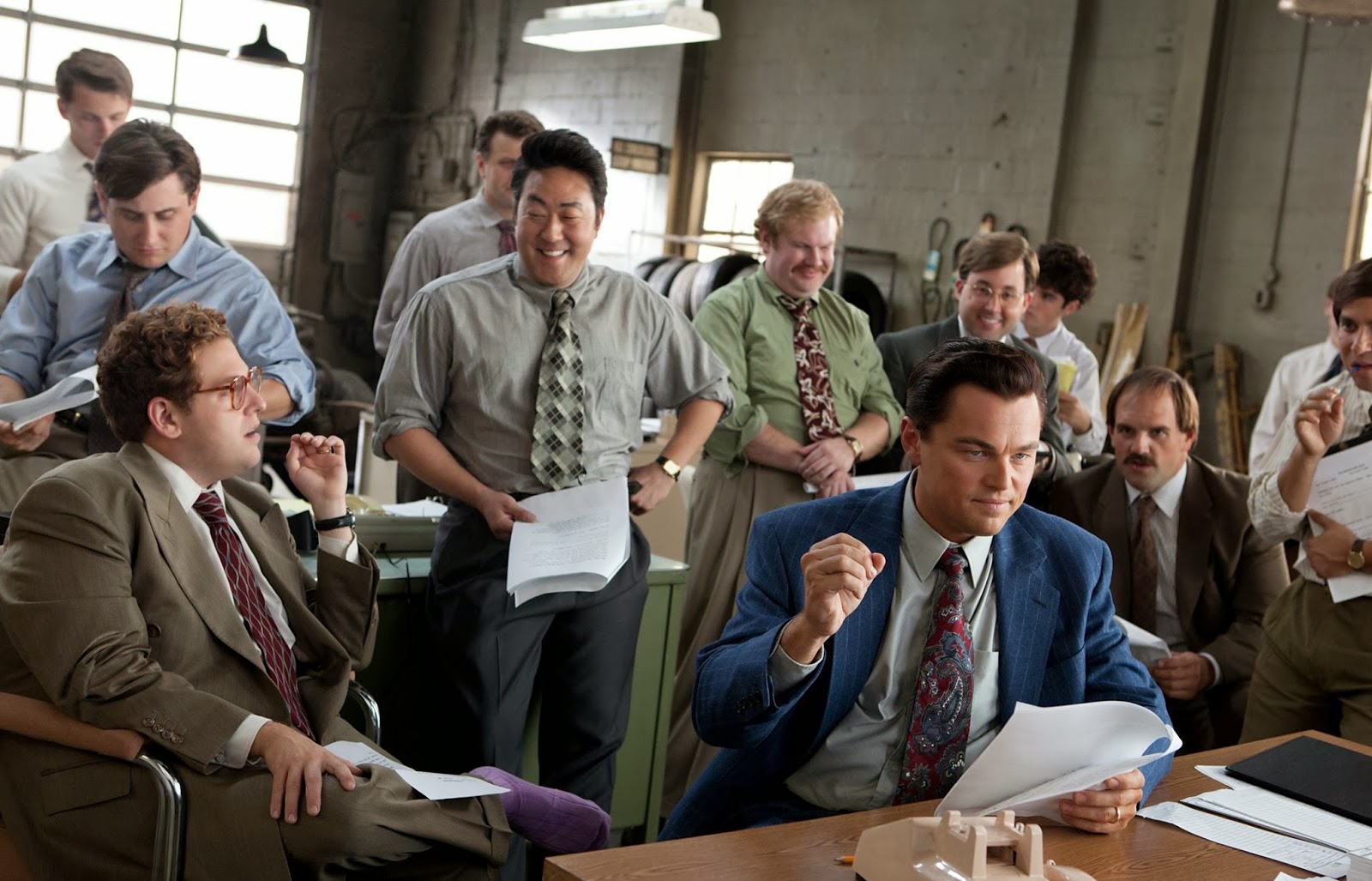

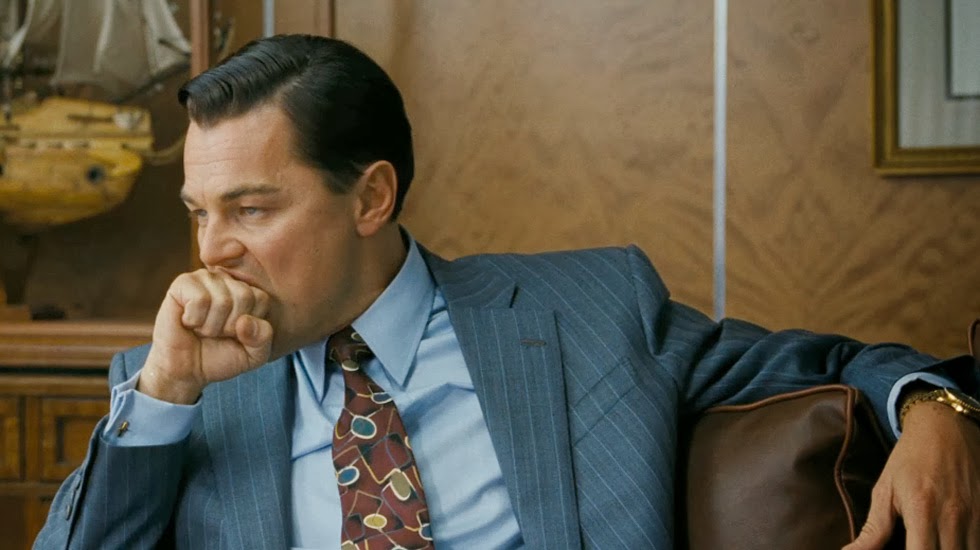




.jpg)




